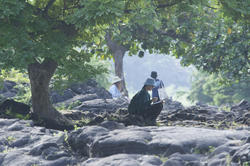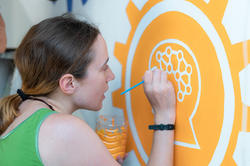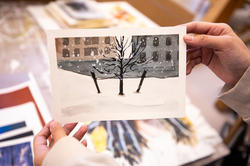A Wintersession global studies course led by Lucy Spelman and Andrea Dezsö considers the important role that artists and designers can play in environmental conservation.
RISD Students Investigate Traditional Printmaking Techniques in Europe

Senior Adrian Jackson 23 PR (pictured painting above) was one of 15 students learning to work with sumi ink during Assistant Professor Daniel Heyman’s globe-trotting Wintersession Printmaking class Berlin and Utrecht: Paper, Print, Sumi Drawing. “There are lessons to be learned in European cities about the devastation of war, the fragile promise of peace and the role of visual culture in both building and tearing down societies,” says Heyman.
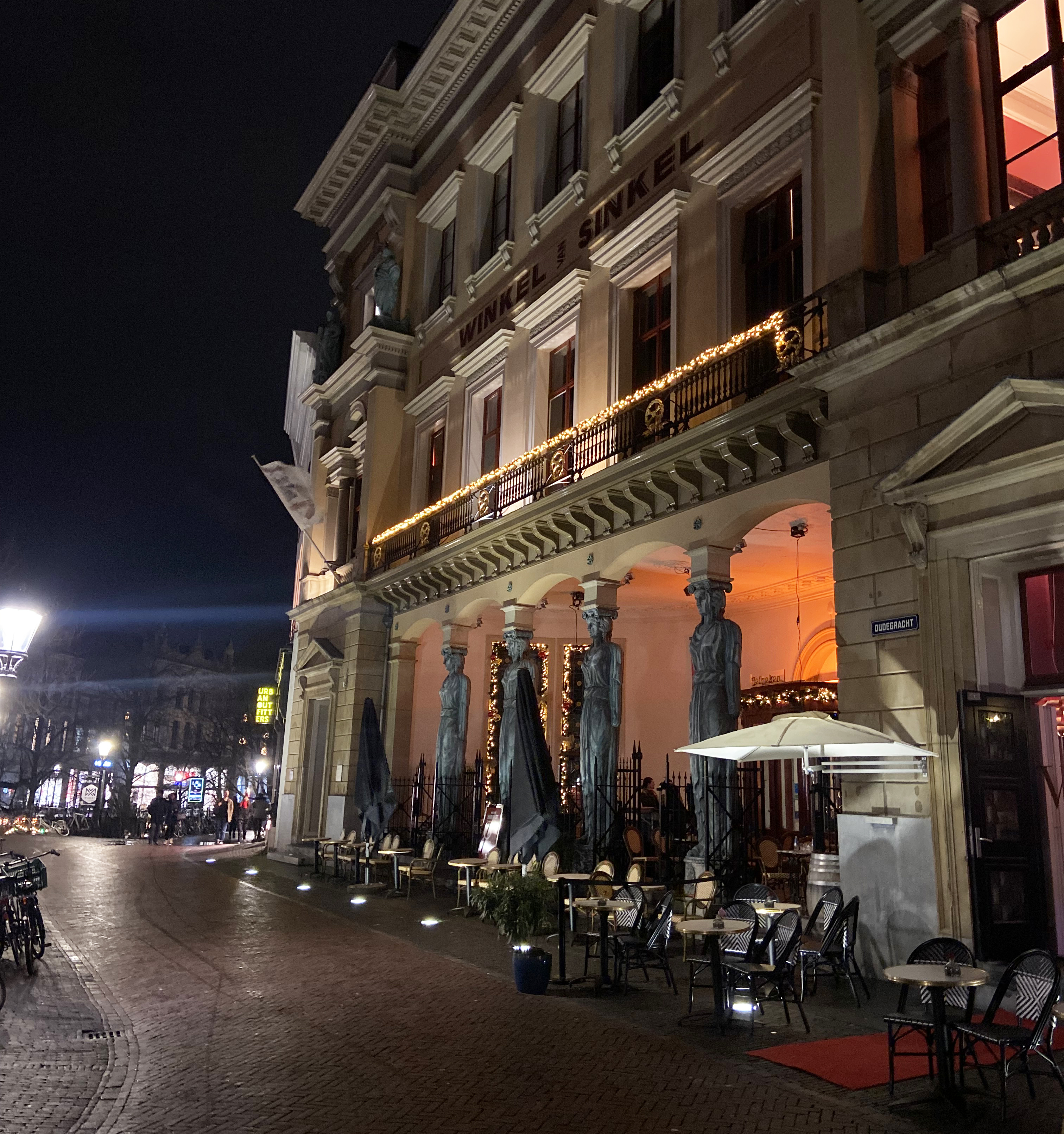
The class concentrates on traditional techniques—ink drawing, papermaking and printmaking—and examines how modern and contemporary artists are using them to explore global issues in visual terms. The students began their journey in Utrecht, the Netherlands with an intensive sumi ink workshop led by Dutch artist Nel Pak, who provided historical context for the art form and even showed students how to make gradations of black and gray inks from ink sticks, a tradition dating back thousands of years.
“There are lessons to be learned in European cities about the devastation of war, the fragile promise of peace and the role of visual culture in both building and tearing down societies.”
Before leaving the Netherlands, the class explored sustainable papermaking at Papiermakerij de Hoop and visited the Depot Boijmans in Rotterdam, the Joods Historisch Museum and the Stedelijk Museum Amsterdam, where students were able to see important ink paintings by South African artist Marlene Dumas.
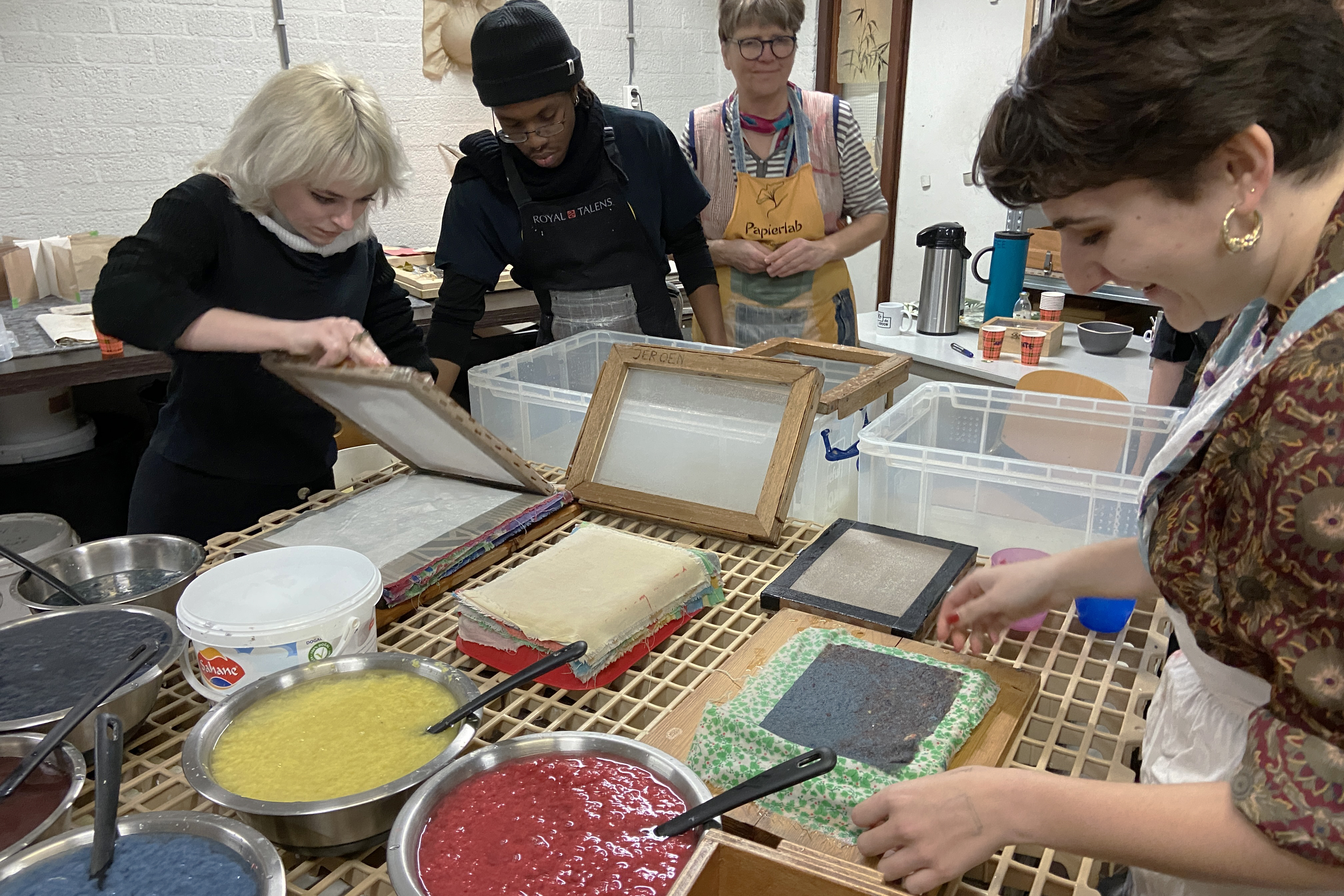
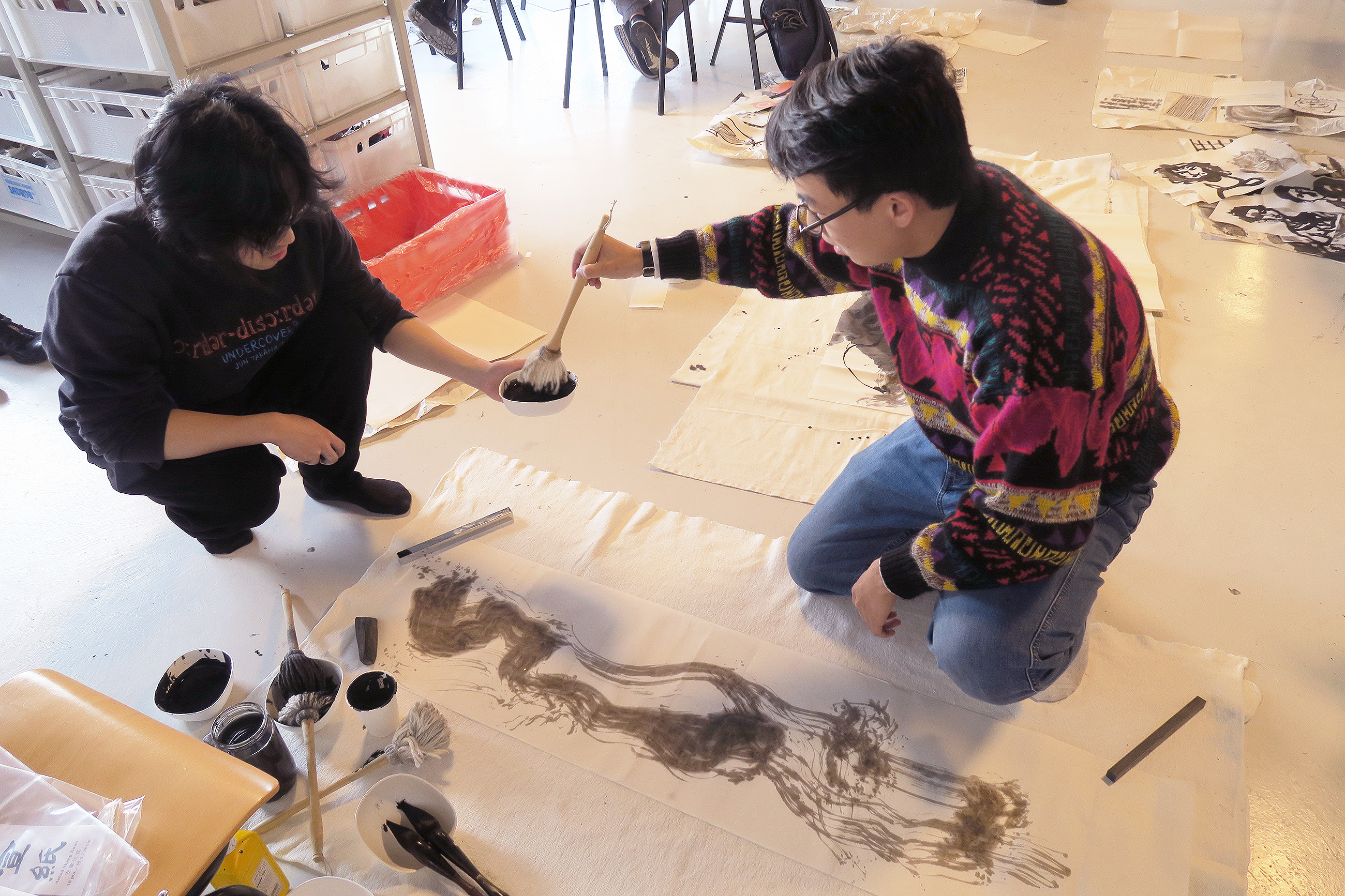
After heading east to Berlin, they participated in a cotton, hemp, abaca and denim papermaking workshop with renowned papermaker Gangolf Ulrich; visited the Neue Nationalgalerie and the Memorial to the Murdered Jews of Europe; saw Puccini’s opera Tosca at the Deutsche Oper Berlin; and were welcomed into the studios of printmaker Eva Pietzcker and Keystone Editions.
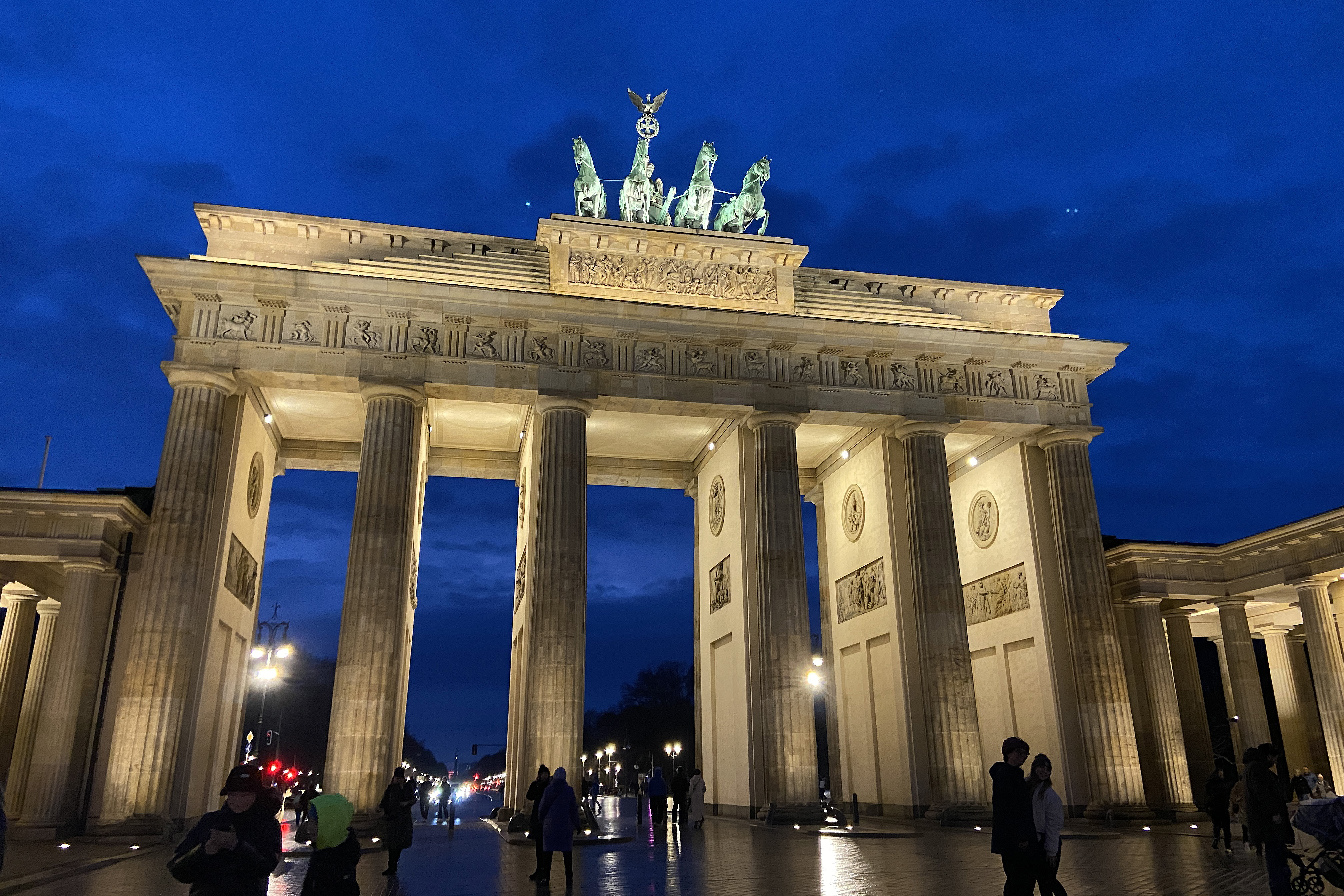
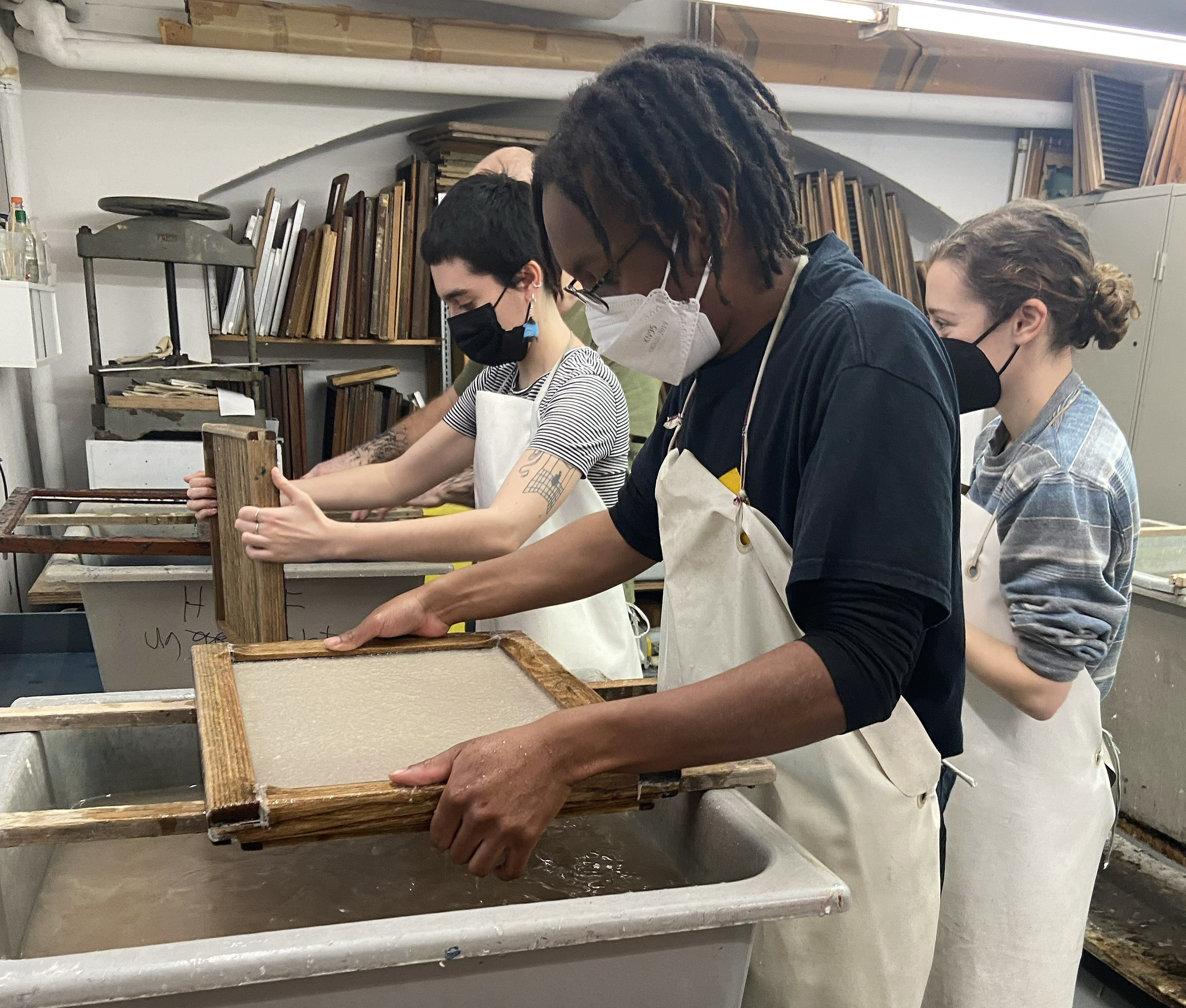
“We also traveled by train to Leipzig, which was formerly part of East Germany,” says Heyman. “Leipzig native and linocut artist Harald Alff introduced us to the arts community there, which is very active, and spoke about what life was like for artists under the Communist regime.” Modern-day Leipzig, he adds, has a huge impact on the international art world via the New Leipzig School, which is centered around the studio spaces and galleries of the Leipziger Baumwollspinnerei.
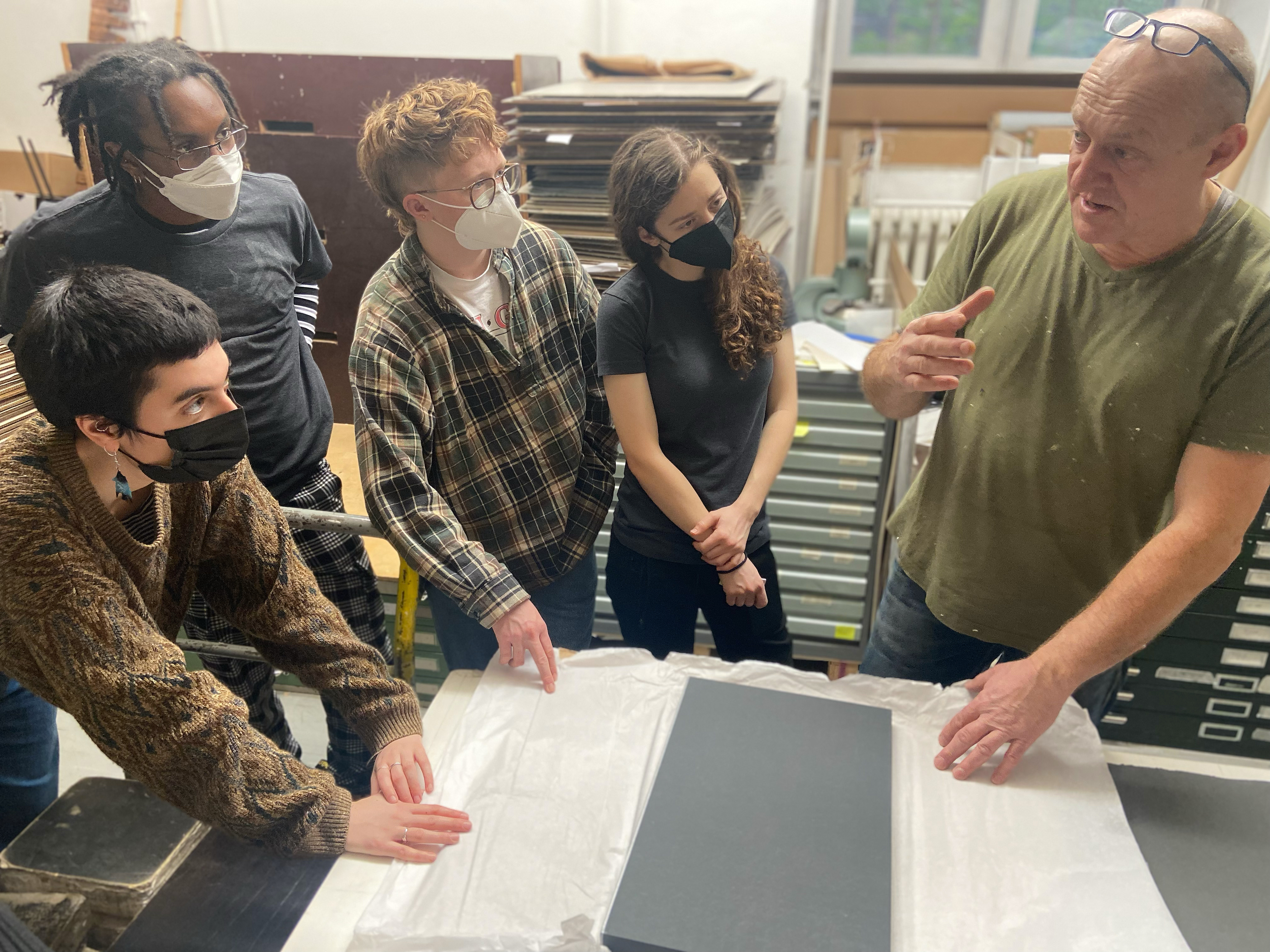
“With images of the war in Ukraine flooding our cultural consciousness, the global influence of what happens in Europe is undeniable,” says Heyman.
—Simone Solondz / photos by Daniel Heyman
February 7, 2023
